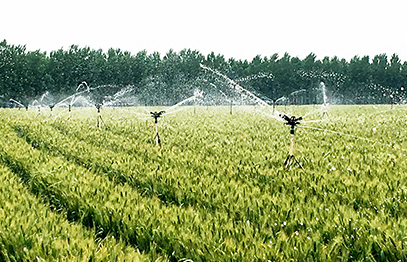Nov . 29, 2024 12:18 Back to list
Guide to Installing a Submersible Sump Pump Efficiently in Your Home
Installing a Submersible Sump Pump A Step-by-Step Guide
A submersible sump pump is an essential device for homeowners dealing with excess water accumulation in basements or crawl spaces. When installed properly, it helps prevent flooding, water damage, and mold growth. Whether you're a seasoned DIYer or a newcomer to home improvement projects, installing a submersible sump pump can be approachable with the right guidance. This article outlines the steps to successfully install your sump pump.
Step 1 Gather Necessary Tools and Materials
Before diving into the installation, ensure you have all the required materials and tools. You will need
- Submersible sump pump - Sump basin or liner (if not included with the pump) - PVC pipe and fittings (to connect the pump to the discharge) - Check valve (to prevent backflow) - Power source (an electrical outlet or extension cord) - Tools a shovel, power drill, level, and wrenches
Step 2 Choose the Location
Identifying the correct location for your sump pump is critical. Ideally, the pump should be placed at the lowest point in the basement or crawl space. Ensure it's away from any walls and that there's enough room to access the pump for maintenance. Additionally, check if there’s a nearby electrical outlet to power the pump.
Step 3 Prepare the Sump Basin
If you're using a sump basin or liner, dig a hole to accommodate it. The hole should be slightly wider than the basin itself to allow for gravel or other materials to provide drainage. The depth should be just enough so that the top of the basin sits one inch below the floor level. This will help to maximize the basin’s capacity.
Step 4 Install the Sump Basin
Place the sump basin in the hole and ensure that it is level. Backfill around the basin with gravel or dirt, compacting it as you go. This creates a solid base and helps with water filtration into the pump.
Step 5 Connect the Pump
Next, it's time to install the submersible pump. Place it into the sump basin according to the manufacturer's instructions. Depending on your pump model, you may need to connect the discharge pipe directly to the pump unit.
submersible sump pump installation

Step 6 Install the Check Valve
To prevent any water that is pumped out from flowing back into the sump basin, you must install a check valve in the discharge line. This is typically placed a few feet away from the pump discharge. Make sure it's oriented correctly; the arrow on the valve should point in the direction of the water flow.
Step 7 Run the Discharge Pipe
Run the PVC discharge pipe from the check valve to the desired drainage location, ensuring that there are no sharp bends that might impede water flow. While routing the pipe, avoid positioning it in a way that allows water to drain back towards the sump pit.
Step 8 Connect Power
Once the pump is positioned and the discharge line is connected, plug the pump into an electrical outlet. It’s essential to use a GFCI (Ground Fault Circuit Interrupter) outlet for safety reasons.
Step 9 Test the Pump
With everything in place, it’s time to test your sump pump. Pour some water into the basin to simulate heavy rainfall. The pump should activate and expel the water through the discharge pipe. Make sure to monitor its operation during the first few cycles to check for leaks or operational issues.
Step 10 Maintenance
Regular maintenance is pivotal for the longevity of your sump pump. Every few months, ensure that the pump is free of debris, and periodically test its functionality by pouring water into the basin.
Conclusion
Installing a submersible sump pump can significantly protect your home from water damage. By following these steps and paying careful attention to details, you can ensure that your sump pump installation is successful, providing peace of mind during heavy rainfall or snowmelt. Always consult the manufacturer’s guide for specific instructions tailored to your installed model.
-
Submersible Water Pump: The Efficient 'Power Pioneer' of the Underwater World
NewsJul.01,2025
-
Submersible Pond Pump: The Hidden Guardian of Water Landscape Ecology
NewsJul.01,2025
-
Stainless Well Pump: A Reliable and Durable Pumping Main Force
NewsJul.01,2025
-
Stainless Steel Submersible Pump: An Efficient and Versatile Tool for Underwater Operations
NewsJul.01,2025
-
Deep Well Submersible Pump: An Efficient 'Sucker' of Groundwater Sources
NewsJul.01,2025
-
Deep Water Well Pump: An Efficient 'Sucker' of Groundwater Sources
NewsJul.01,2025
-
 Submersible Water Pump: The Efficient 'Power Pioneer' of the Underwater WorldIn the field of hydraulic equipment, the Submersible Water Pump has become the core equipment for underwater operations and water resource transportation due to its unique design and excellent performance.Detail
Submersible Water Pump: The Efficient 'Power Pioneer' of the Underwater WorldIn the field of hydraulic equipment, the Submersible Water Pump has become the core equipment for underwater operations and water resource transportation due to its unique design and excellent performance.Detail -
 Submersible Pond Pump: The Hidden Guardian of Water Landscape EcologyIn courtyard landscapes, ecological ponds, and even small-scale water conservancy projects, there is a silent yet indispensable equipment - the Submersible Pond Pump.Detail
Submersible Pond Pump: The Hidden Guardian of Water Landscape EcologyIn courtyard landscapes, ecological ponds, and even small-scale water conservancy projects, there is a silent yet indispensable equipment - the Submersible Pond Pump.Detail -
 Stainless Well Pump: A Reliable and Durable Pumping Main ForceIn the field of water resource transportation, Stainless Well Pump has become the core equipment for various pumping scenarios with its excellent performance and reliable quality.Detail
Stainless Well Pump: A Reliable and Durable Pumping Main ForceIn the field of water resource transportation, Stainless Well Pump has become the core equipment for various pumping scenarios with its excellent performance and reliable quality.Detail
